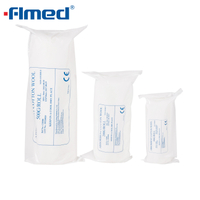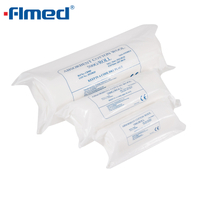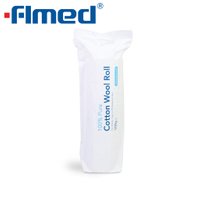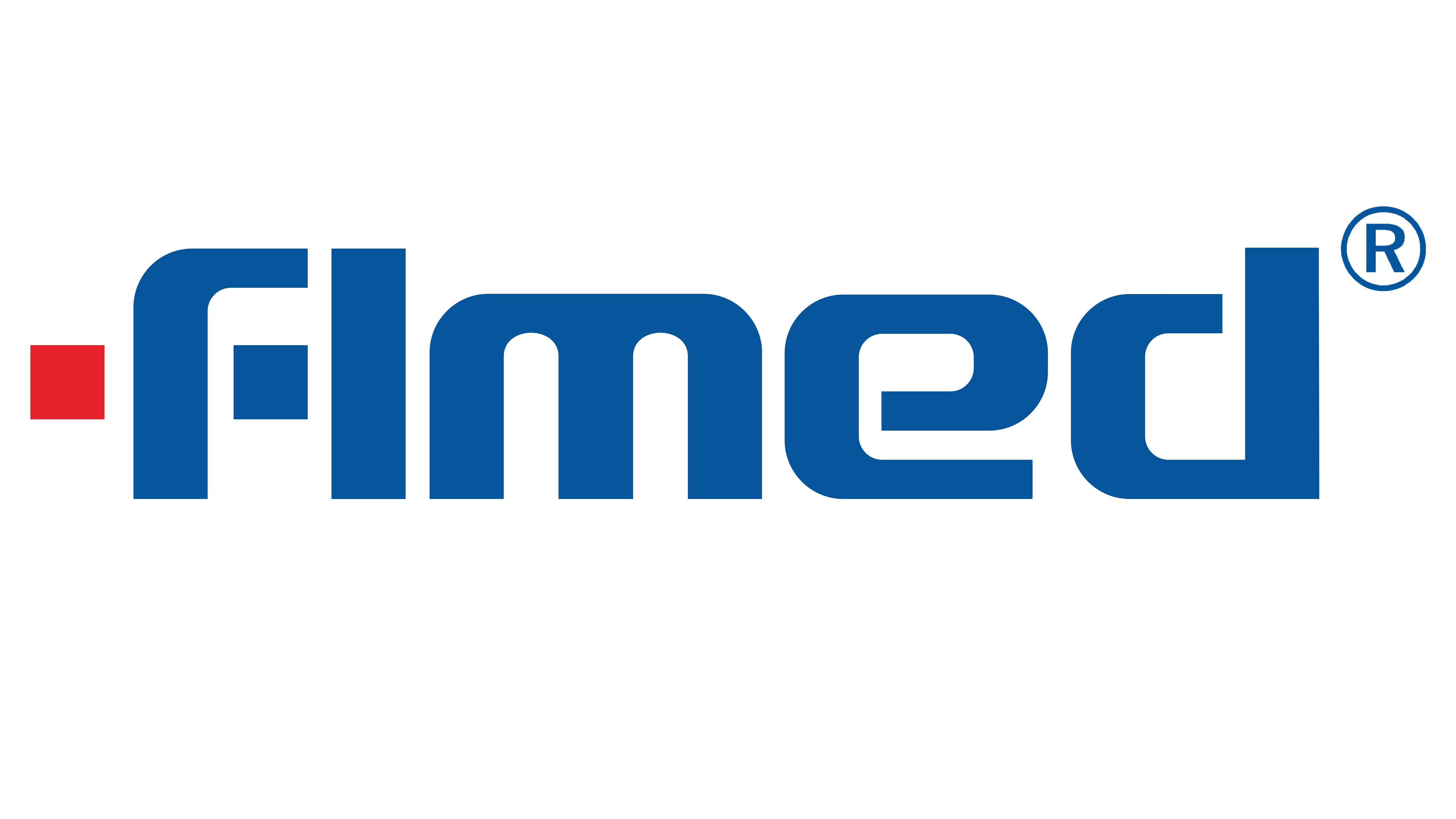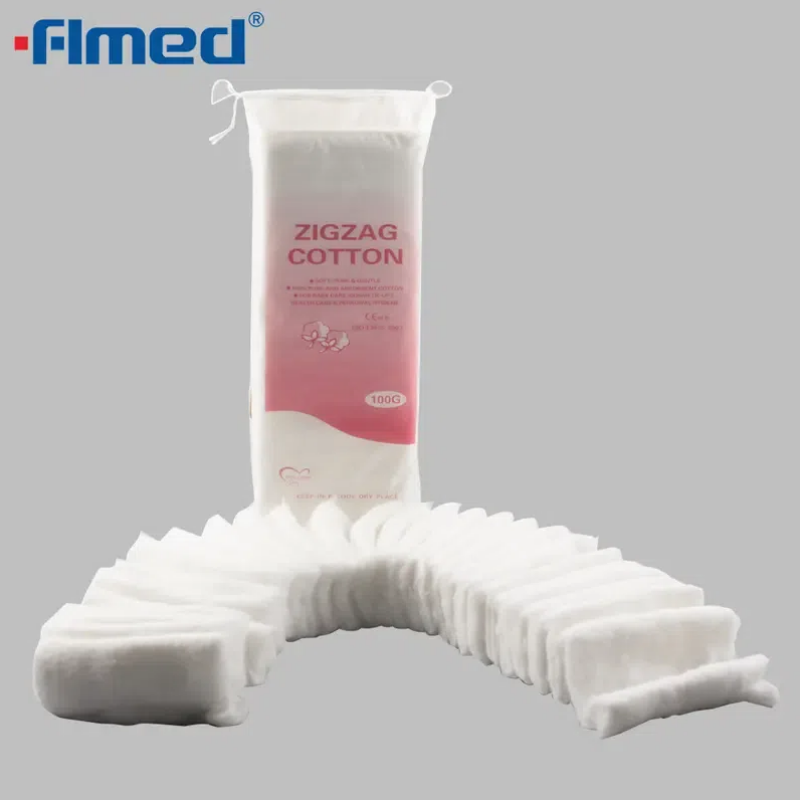
Sterility matters in some situations — and adds cost in others. Clinics, dental offices, and aesthetic salons must make clear stocking choices that balance patient safety, efficiency, and cost. At Forlong Medical, we provide high-quality medical cotton, from cotton wool rolls to cotton balls and zigzag cotton, designed to meet different use cases. Understanding when sterile or non-sterile cotton is required helps you avoid waste while ensuring patient comfort and compliance.
What “sterile” actually guarantees
Sterile medical cotton is not just a cleaner version of non-sterile cotton — it has undergone specific processes to eliminate microorganisms. This is essential for procedures that involve open wounds or invasive techniques where even minimal contamination could compromise healing or increase infection risks.
Sterility is guaranteed through both the production environment and post-production treatment. Manufacturers must maintain controlled conditions in cleanrooms, use protective packaging, and ensure that no step allows the reintroduction of bacteria, fungi, or spores. For hospitals, this guarantee translates into trust — every time a sterile pack is opened, clinicians know they are working with a product that meets medical-grade safety.
How sterility is achieved and labeled
Manufacturers achieve sterility using methods such as gamma irradiation, ethylene oxide gas, or steam sterilization. After sterilization, the cotton is sealed in protective packaging with lot numbers, expiry dates, and sterilization indicators. These details give clinics traceability and assurance that sterility is intact until the package is opened. Clear labeling also ensures staff can quickly distinguish sterile medical cotton from non-sterile options when preparing for different procedures.
Some countries also require regulatory compliance marks, such as CE labeling in Europe, which confirms that sterilization has been validated and monitored under strict protocols. When comparing suppliers, these details are not minor — they are the foundation of safety in modern clinical care.
Common clinical use cases that require sterile medical cotton
Some clinical environments have zero tolerance for contamination. In such settings, sterile medical cotton — whether in the form of cotton balls, cotton wool rolls, or zigzag cotton pads — is mandatory.
Surgery, injections, neonatal care, wound packing
Surgical procedures: Prepping skin before incision, absorbing blood, or dressing surgical wounds requires sterile cotton to maintain aseptic conditions. Without it, the risk of post-operative infection increases significantly.
Injections: From vaccinations to IV therapy, sterile cotton balls soaked in antiseptic are essential for skin disinfection. Even small lapses in sterility here can introduce pathogens directly into the bloodstream.
Neonatal care: Newborns are especially vulnerable, so sterile cotton is used for cleaning umbilical cords, ears, or delicate skin. Clinics often rely on pre-rolled sterile cotton for predictable quality.
Wound packing: Deep or chronic wounds demand sterile cotton rolls to prevent infection during treatment and dressing changes. Non-sterile cotton in these cases could undo healing progress.
In each of these cases, sterility protects patients and reduces liability for clinics. Stocking sterile cotton in adequate quantities ensures readiness for any high-risk procedure. Many facilities use a standard rule: whenever skin integrity is broken, sterile cotton must be used.
![Medical Cotton Medical Cotton]()
When non-sterile cotton is appropriate
Not all clinical or salon tasks require sterile cotton. Non-sterile medical cotton remains an essential, cost-effective option for everyday use. In fact, it often makes up the bulk of daily consumption in aesthetic salons, training centers, and outpatient facilities.
Cost, storage and contamination-risk tradeoffs
Non-sterile cotton wool rolls, zigzag cotton, and cotton balls are widely used for surface cleaning, cosmetic applications, and general training exercises. For example:
Cosmetic procedures: Facial cleansing, nail treatments, or skin preparation in salons often use non-sterile cotton where infection risk is low. The soft texture of zigzag cotton makes it popular for skin care treatments.
General cleansing: Wiping instruments before sterilization or cleaning non-invasive areas can be done with non-sterile cotton.
Training settings: In nursing schools or skill workshops, non-sterile cotton allows affordable practice without consuming more costly sterile supplies.
The key tradeoff is contamination risk. While non-sterile cotton reduces costs and stores easily, clinics must train staff not to substitute it in situations requiring sterility. A simple labeling system or storage separation in the supply room prevents mix-ups. Stocking both types ensures flexibility without compromising safety.
Handling, storage and best practices to keep cotton sterile
Even when purchasing sterile medical cotton, how it is handled in your clinic affects its reliability. Incorrect storage or reuse practices can quickly turn sterile supplies into contaminated ones. Clinics that fail to train staff on proper handling risk wasting their investment in sterile products.
Opening, transferring, single-use vs multi-use guidance
Opening: Only open sterile cotton packs immediately before use, and do so in a controlled, clean area. Any pack left open and exposed should be discarded.
Transferring: Avoid touching cotton directly; use sterile forceps or wear gloves. Even brief hand contact can introduce bacteria.
Single-use vs multi-use: Cotton balls are typically single-use, while cotton wool rolls may be cut into smaller pieces. In these cases, only remove the portion needed and keep the rest sealed.
Storage: Keep sterile cotton in dry, temperature-controlled areas, away from sunlight and moisture. Always rotate stock based on expiry dates.
Establishing clear clinic protocols — for example, separate storage cabinets for sterile and non-sterile supplies — helps prevent mistakes. Posting a “How to store sterile medical cotton” guideline in supply rooms is a practical step many facilities take.
Supplier selection: questions to ask about sterilization & lot traceability
Choosing the right supplier is as important as choosing the right type of cotton. Forlong Medical has long specialized in providing medical disposables that meet international standards, and clinics should always demand the same from any supplier.
Questions to ask include:
What sterilization method is used, and is it validated?
Are sterilization indicators visible on each package?
Can the supplier provide Certificates of Analysis (COA) for each lot?
How is packaging designed to maintain sterility during shipping and storage?
Does the supplier provide both sterile and non-sterile options, so clinics can stock appropriately?
Traceability ensures that, in case of any issue, your clinic can quickly identify affected batches and take corrective action. Suppliers who provide transparent documentation strengthen your operational confidence. Building long-term relationships with reliable partners like Forlong Medical ensures not only consistent quality but also timely replenishment of critical supplies.
Sterile vs non-sterile: comparison table
Feature | Sterile Medical Cotton | Non-Sterile Medical Cotton |
Microbial safety | Free from microorganisms | May contain environmental contaminants |
Packaging | Individually sealed, lot numbered, dated | Bulk packaged, simpler wrapping |
Cost | Higher due to sterilization process | Lower, more affordable for general use |
Applications | Surgery, injections, wound care, neonatal | Cleaning, cosmetics, training, low-risk |
Storage | Controlled, unopened until needed | Standard dry storage |
Risk if misused | Low if handled correctly | High if used in sterile-required settings |
This comparison makes it clear: both types of cotton are essential, but each has its own place in your supply chain.
Conclusion
Medical cotton is a universal necessity, but deciding between sterile and non-sterile options depends on clinical context. Forlong Medical provides both sterile and non-sterile cotton products, including cotton wool rolls, cotton balls, and zigzag cotton, to meet diverse needs. As a rule of thumb: use sterile cotton for any invasive or high-risk procedure, and rely on non-sterile cotton for cosmetic or general tasks. This balance helps clinics protect patients while managing costs. To explore our full product range or request sterile sample packs with COA documentation, contact us today.

 English
English
